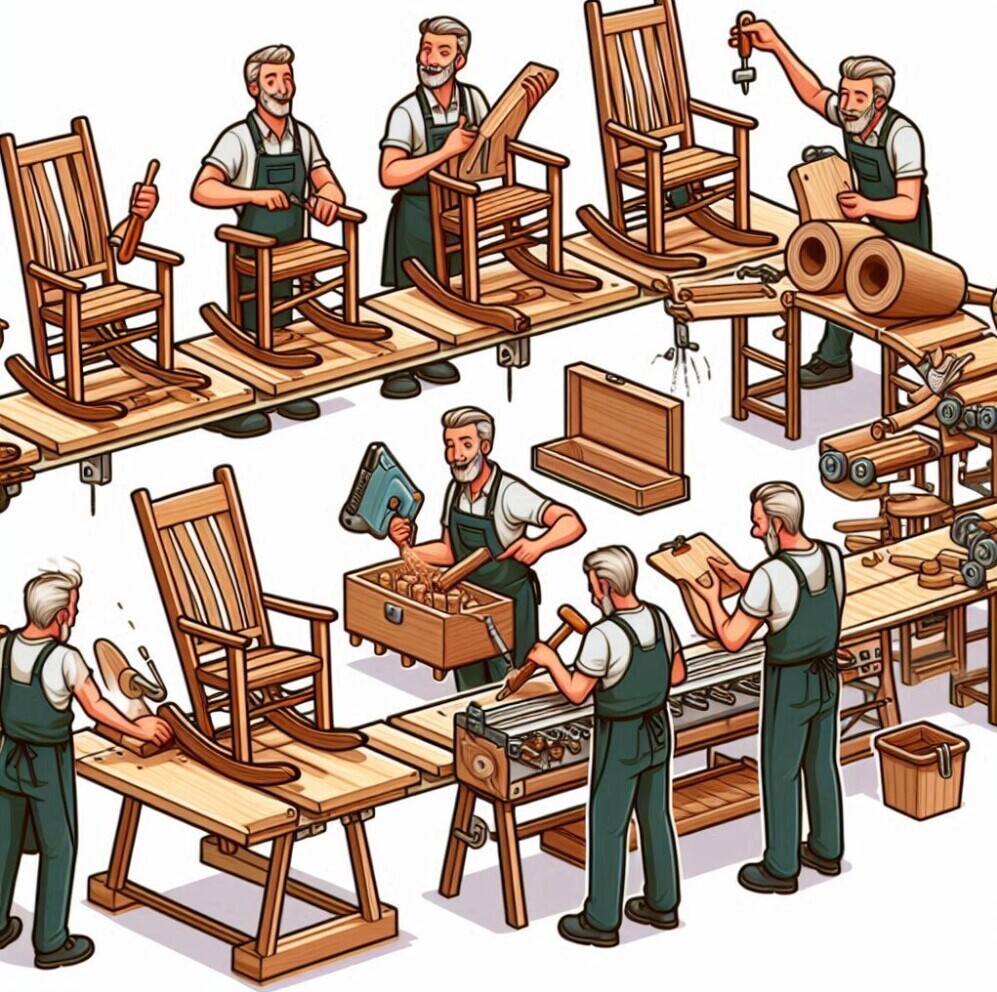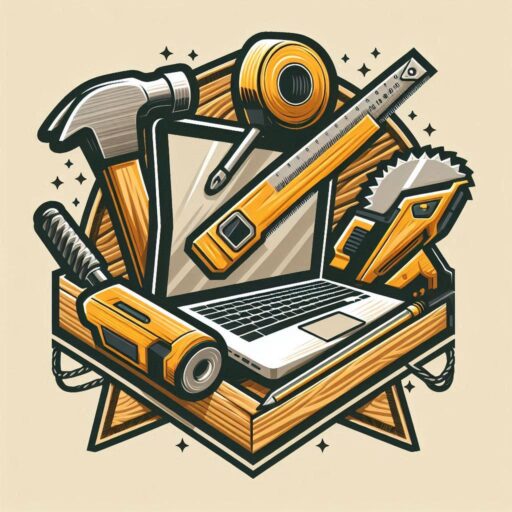 Time management isn’t just a buzzword; it’s the backbone of bringing a woodworking project from start to finish without losing your mind. Managing time well means more than just sticking to your plans. It’s about engaging in a careful dance with tasks and tools to keep the project rhythm smooth and steady.
Time management isn’t just a buzzword; it’s the backbone of bringing a woodworking project from start to finish without losing your mind. Managing time well means more than just sticking to your plans. It’s about engaging in a careful dance with tasks and tools to keep the project rhythm smooth and steady.
When you’re trying to conjure up that perfect piece, every minute counts. You don’t want to rush the finishing touches for that beautiful coffee table because you burned through your time elsewhere. Smart time management lets you keep that stress at bay while keeping quality intact.
There’s a real learning curve here, filled with trial and success stories. I’ve seen projects soar to greatness when folks get their heads around it. It’s not just about punching the clock; it’s about working smarter to let creativity thrive without unnecessary pressure.
So, why figure it out? Imagine cruising through your process without hitting snags or getting buried in chaos. Effective time management in woodworking isn’t just about the task at hand—it’s about safeguarding your peace of mind and creating a work process that feels as good as it looks.
Setting Clear Goals and Expectations
Getting clear on what you want to achieve in your woodworking project sets the foundation for everything else. It’s the start of a journey that can make all the difference between wandering aimlessly and successfully crafting that dream piece.
A solid way to set goals is to ensure they’re SMART: Specific, Measurable, Achievable, Relevant, and Time-bound. Specific means detailing exactly what you want to build, like an oak dining table with intricate carvings. Measurable means identifying how to track progress, perhaps by breaking the project into phases we can tick off once completed.
Achievable is essential. While it’s nice to dream big, setting overly ambitious goals without the required resources or skills can lead to frustration. Aim for realistic targets that fit your experience level and toolset—this keeps your woodworking adventures productive and enjoyable.
Your goals should also be relevant to your interests and values. If building a large conference table aligns with your style and skillset, it’ll feel more engaging and rewarding.
Time-bound means having a deadline or timeframe for each stage of your project. This keeps you on track and ensures you manage your time efficiently. Without it, projects can drift into never-ending pursuits.
Balancing quality expectations with time constraints is tricky. Setting clear deliverables and understanding your project’s scope will help in adjusting quality levels without compromising entirely. This balance ensures you aim high but stay grounded, contributing to a satisfying woodworking experience.
Prioritizing Tasks Effectively
Knowing what to tackle first in any woodworking project saves heaps of time and keeps everything moving smoothly. Prioritizing tasks is all about figuring out what’s most important or time-sensitive, and handling those things first so they don’t trip you up later.
One technique I find super handy is the Eisenhower Box. Sounds fancy, right? It’s just a simple way to classify tasks into four categories: urgent and important, important but not urgent, urgent but not important, and neither urgent nor important. It’s like sorting the wheat from the chaff, helping me focus on what truly matters first.
Of course, projects never go exactly as planned—unexpected things pop up, priorities shift. That’s where being adaptable comes into play. If a task that seemed minor before suddenly needs attention, being flexible helps shift focus smoothly without derailing the whole timeline.
To recap, determining what really needs doing first isn’t a set-it-and-forget-it decision. It’s a dynamic process that needs your good judgment and sometimes quick thinking. Prioritizing effectively makes sure your woodworking project stays on course, looking awesome without unnecessary stress.
Creating a Detailed Project Timeline
A project timeline is like a roadmap for your woodworking journey. It frames out what’s going to happen and when, helping you see the big picture and avoid feeling lost in the details.
Gantt charts are one of the best tools out there for visualizing your timeline. This kind of chart splits your project into phases or tasks without it being just a simple to-do list. You can see how tasks overlap or follow each other, which keeps you focused on what’s coming up next.
Each project has its quirks, so each timeline will look a little different. Say you’re building a bookshelf that’s short and stout. Your timeline might focus on detailed carving above all. But if you’re crafting a sprawling picnic table, breaking down each step—from cutting the wood to sealing it—will help you guard against surprises.
Big projects, especially those with multiple phases, might need timelines that’re broken into mini-timelines. This helps manage parts of the project individually without overwhelming you with everything at once.
The real magic happens when your timeline becomes something adaptable yet consistent. You’ve got to be ready to shuffle things around if materials don’t arrive on time or unexpected hurdles pop up. Flexibility is key so the timeline can serve you rather than become a source of frustration.
Allocating Resources Wisely
Resource allocation in woodworking is all about using your materials, tools, and space in the best way possible to get things done efficiently. It’s a balance between having just enough of what you need without overstocking or running out when it matters most.
Start by inventorying the materials you need for your project. This isn’t just about having enough wood, but also knowing the kind you need—oak, cherry, or maybe something a bit unique. Calculate your needs and check your stock to save extra trips to the store.
Tool management is another piece of the puzzle. Knowing when and where you’ll need each tool can prevent unnecessary downtime. If routing that edge takes longer because the bit is dull, it’s worth ensuring replacements are ready before you begin.
Space usage might not seem like a big deal, but it impacts time and safety. Organize your workspace so that tools and materials are easy to find and access. A well-planned setup means you’re not tripping over things or losing time searching for that elusive chisel.
Efficient allocation also includes a backup plan. Nobody wants to scramble last minute because a supplier is late. Keeping an eye on potential delays lets you move resources around smoothly, keeping those timelines on track without sacrificing quality.
Building an Efficient Workflow
Crafting an efficient workflow in woodworking can dramatically improve how smoothly your project runs. It’s all about lining up the steps in a way that minimizes downtime and keeps things flowing smoothly.
One big tip is to streamline your processes. Grouping similar tasks together is a classic example. Maybe you’re cutting all the boards to size first, so you’re not swapping between tools over and over. This efficiency saves time and, believe it or not, a bit of your sanity.
Another trick involves the transitions between tasks. The setup for each task can be a time eater if you’re not prepared. Keep your work area organized and make sure tools and materials are within easy reach. Quick access enhances efficiency, helping you switch between tasks without needing to frantically search for what you need next.
These days, technology is on our side. Utilizing tools like digital measuring devices or automated cutters can be game changers. They reduce manual errors and speed things up, giving you more time to focus on the craftsmanship.
Remember, the perfect workflow adapts to your style. You don’t need the fanciest system or the most expensive tools—just what helps you get the job done right without unnecessary hassle. Running a few experiments and tweaking as you go helps mold an approach that fits like a glove.
Learning to Avoid Common Time Wasters
Identifying what’s eating up your time in the workshop is the first step. Sometimes it’s a habitual scroll through your phone between tasks or chatting about weekend plans. Seems innocent until you realize the minutes add up.
Distractions are a real threat to focus. Keeping them at bay might mean setting phone limits or having designated break times to maintain discipline. The aim is to zone in on your woodworking without those splitting focus moments.
Another time thief is disorganized tools and materials. Spending ages hunting for a specific screwdriver is precious time you’ll never get back. Keeping everything in its place and setting up before you start are small habits with big payoffs.
Delegation can be a powerful ally in the workshop. If there’s someone who can help with simpler tasks, don’t shy away from sharing the load. Choosing the right tasks to delegate is key to freeing yourself to focus on more critical aspects.
Striking down time wasters isn’t just about cutting tasks but refining how you go about things. Stay aware of what tends to take you off course and tackle those at their roots for a truly streamlined session of woodworking joy.
Monitoring Progress and Making Adjustments
Keeping track of your progress in woodworking isn’t about micromanaging every detail. It’s about having an overview so you know where you stand and what’s left to tackle. Progress tracking tools or even a simple checklist can serve as a project compass, providing direction and focus.
Being organized gives you the insight to spot when something’s a little off course. Say you planned a week to carve details, but you’re still shaping the basics. Recognizing these deviations early helps you pivot and adjust your actions before things slide too far off track.
Making necessary adjustments calls for quick, confident decisions. Perhaps the detail carving takes longer than expected, other tasks might need to be re-evaluated. Whether it’s deciding to use a faster method or rescheduling less critical tasks, having the flexibility to change plans keeps your project on the rails.
Being reactive instead of proactive can mean more stress, less quality, or worse, a dreaded incomplete project. Monitoring is your safety net, protecting you from those potential hiccups and ensuring you deliver a product you’re proud of, on time.
Reflecting and Improving for Future Success
Completing a woodworking project is a moment to savor, but it’s also a fantastic opportunity to learn and grow. Reflecting on what went well and what didn’t is a crucial step in honing your woodworking skills for future projects.
Dive into the nitty-gritty of what worked—did your timeline hold up? Did the workflow feel right? Assess which strategies were effective in managing time and resources and which ones you might want to tweak.
Consider gathering feedback if you worked with others or created the piece for someone else. External insights can reveal blind spots and highlight successes you might have overlooked.
Documenting lessons learned is another way to retain valuable insights. Keeping a log or diary of each project, noting down challenges and breakthroughs, creates a personalized resource you can reference over time.
Continuous improvement is the name of the game. Each project builds on the last, helping polish your technique and fine-tune your approach. It’s not just about clocking hours in the shop but evolving as a woodworker who’s mastered the art of effective time management.



